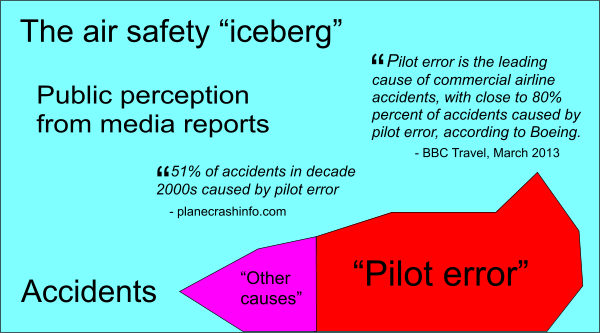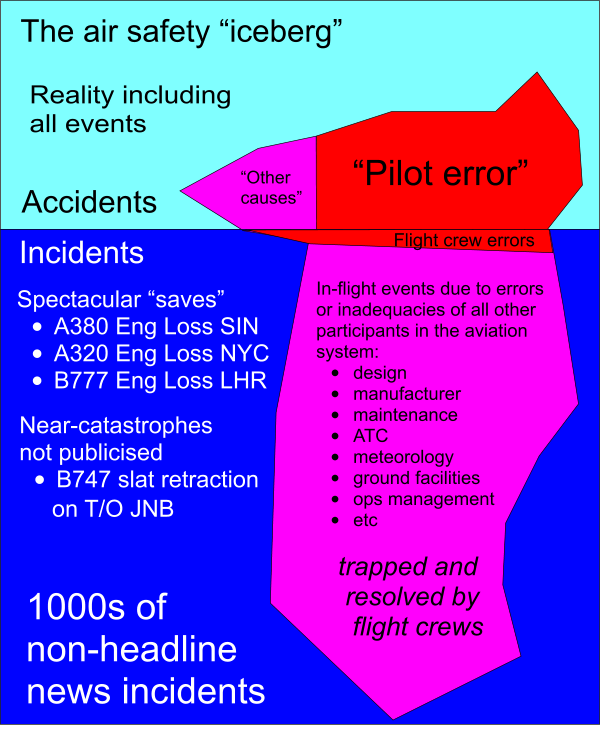The need for the pilot community to address this situation is starkly demonstrated by the growing public perception that pilots themselves now represent the main threat to air safety.
Airline accidents are highly visible events. However, like the top of an iceberg, this visible element is only a small part of a much greater volume of air safety events that pilots are involved in. Pilots prevent most most of these from becoming accidents.

Serious newspapers routinely publish articles expounding the benefits of removing pilots from air transport, citing them as the primary source of human error in aviation, and comparing this with the "safer" exponential growth of unmanned air vehicles ("drones") for military and commercial purposes.
This trend can only be worsened following the appalling Germanwings tragedy in March 2015. For example, an article in the London "Times" was headed "Computers are the safest option", and commenced "Half of all fatal air accidents involve pilot error. The German wings A320 crash will only strengthen the case for closer monitoring of pilots and their mental health — and eventually for removing people from cockpits."
What this overlooks of course is the role of other humans in the system and the crew role in detecting and dealing with errors made by those humans, be they designers, regulators, manufacturers, maintainers, or providers of other aspects of the system from air traffic controllers to baggage handlers and airport employees.
In these cases it is the presence of and action by crews that prevent errors becoming headline-making catastrophes. These are the huge proportion of the safety events "iceberg" that lies unseen to the public below the "waterline" of their attention.

But the professional pilot community must wake up to its own role in fueling this trend, which is distracting attention from the many real problems which need addressing if the industry is are to achieve its air safety objectives.